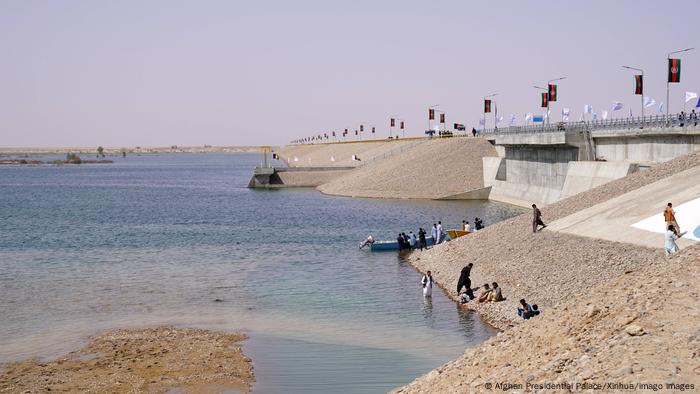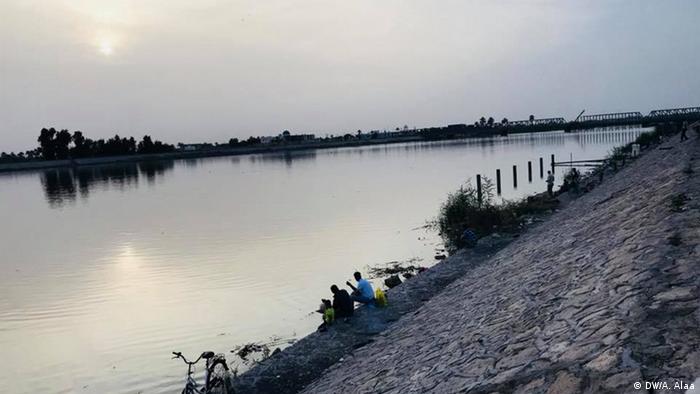[ad_1]
From the Euphrates to the Mekong, dams that provide water supply to one country risk leaving others in drought. Shared water resources can be a source of peace, but also conflict.
At the beginning of the Russian occupation of Ukraine, Moscow announced that it had bombed a dam in the Northern Crimean Channel. After Russia annexed Crimea in 2014, Ukraine erected the dam, blocking a vital water supply in the occupied territory, leading to severe water shortages.
The war in Ukraine is not taking place over the water supply of Crimea. But the chronology of conflicts from the Pacific Water Institute gives examples of water as a weapon, coincidence or trigger of conflict dating back thousands of years. Ashok Swain, a professor of peace and conflict at Uppsala University in Sweden and former UNESCO chair for international water co-operation, says Crimea’s water supply is one example.
“However, shared water resources can also be an opportunity for cooperation. Even in Crimea, if the international community had helped Russia and Ukraine resolve the humanitarian water issue, it could have given them an opportunity or a forum to negotiate and discuss how to address this issue and also they solve other issues “- says Ashok.
“Tensions over water”
About 40% of the world’s population lives in rivers that cross international borders. And with the climate crisis leaving behind many regions suffering from drought, the approach of how to distribute these essential resources evenly has raised high-profile tensions around the world. During the month of February, the Ethiopian Great Renaissance Dam was finally put into operation, despite ongoing opposition from Egypt and Sudan, who had long feared the dam’s impact on their agricultural lands down the Nile.
Dams erected along the Mekong River in China have been blamed for drought caused in Thailand and Cambodia. Meanwhile, tensions have risen between India-Pakistan rivals over the issue of their shared waters in the Indus River basin.
The internet device for Peace and Water Security, built by the World Resources Institute, shows a map of our planet filled with tensions over the issue, tensions which threaten to become violent. However, Scott Moore, author of “Subnational Hydropolitics: Conflict, Cooperation, and Institution Building in Shared River Basins,” says such unrest occurs primarily within states, not between them.
International tensions over water, Moore says, rarely escalate into real conflict. And when disagreements get to the climax, water is often just the pretext for other major issues. “Intuition says that water is the cause of tension and conflict, while I would say it is usually the opposite – geopolitical tensions or economic disputes are triggered by the water issue,” says Moore.
Politics and drought in the Middle East
Since last summer, water shortages in Iran have sparked so-called “Ethiopian Uprising” protests. At the same time, tensions are heating up in long-running disputes with neighboring Afghanistan, over its Kamal Khan dam upstream of the Helmand River.
Susanne Schmeier, associate professor of water law and diplomacy at IHE Delft in the Netherlands, says blaming neighboring countries for water collection could be an appropriate diversion from domestic issues about water pricing and inefficient water infrastructure. “Whenever Iran faces severe internal water crises, which involve citizens and farmers in protests or conflicts,” Schmeier explains, “you will see at the same time strong statements by Iranian policymakers about Afghanistan that say “We want our share of the river.”
And while Iran accuses its neighbor of creating water reserves, it also builds its own dams on the Helmand and other rivers, including a Tigris tributary that flows into Iraq. The latter has its own problems with lack of water.
Drought-stricken Iraq blames Iran and Turkey for its water problems. Turkey has dams on both the Tigris and Euphrates, and downstream. Iraq and Syria say these dams are leaving their countries in drought.
Climate change is exacerbating tensions
After construction in the 1980s, Turkey agreed to release 500 cubic meters of water per second, from the Euphrates through the dam of the Ataturk hydropower plant in neighboring Syria. Today Turkey blames climate change for the slowdown, Syrian Kurds across the border believe Turkey is punishing them as political rivals.
Swain says tensions over the GERD hydropower plant in Ethiopia are also rooted in a tangle of geopolitical and climatic factors. The dam, in theory, could be mutually beneficial: the lower countries, Egypt and Sudan, could use its cheap electricity. At the same time, the dam could be used to regulate the flow of the Nile, in order to avoid floods that have devastated areas of Sudan in recent years.
However, the question arises as to what could happen if after several consecutive years of drought, Ethiopia would restrain the water to keep its reservoir sufficiently filled. “So that’s why this kind of fear is coming. “It’s climate change.”
Water, as a “depoliticized” issue
International cooperation on the Nile waters could be easier if the upstream and downstream countries did not fall on different sides of the geopolitical divide. “The world is divided into two camps. “Ethiopia is receiving support from China and Russia, while Egypt and Sudan are more closely linked to the West.”
However, Mehmet Altingoz, who researches cross-border management at the American University of Delaware, believes that focusing on the humanitarian issue of Crimea’s water supply could have helped disperse tensions across this global divide. “NATO and the West missed an opportunity to ease tensions in the region, urging Ukraine to find a way to co-operate in securing water access to Crimea,” argued one of his co-authored articles.
“It is easier to cooperate on environmental assets,” he told DW. His research has covered Turkey and Armenia, countries that have no diplomatic relations but share ownership of a Soviet-era dam located on their border.
“Every month,” explains Altingoz, a technical committee made up of members from rival countries meets to decide how the water will be shared.
Water, for cooperation and not conflict
According to the UN, about 300 international water treaties have been signed since 1948, and the vast majority rarely become media headlines. “There are far more cases, examples and cases of cooperation on water – especially if we define it in terms of international agreements dealing with the management of shared water resources – than there are cases or examples of conflict,” Moore said.
Although water tensions have been rekindled regularly between India and Pakistan, rival nations have worked together through the Indus Water Treaty, dating back to the 1960s. “and Pakistan, continued the meeting according to the treaty” – says Schmeier. It also points to the stability pact that was created to build peace in the Balkans after the war in the 1990s, taking the common waters of the Danube as a starting point for co-operation. “They negotiated an agreement, created an organization of river basins that united the countries, and then this agreement was extended to trade, to the clearing of war remnants and all other things,” says Schmeier.
top channel
[ad_2]
Source link


















